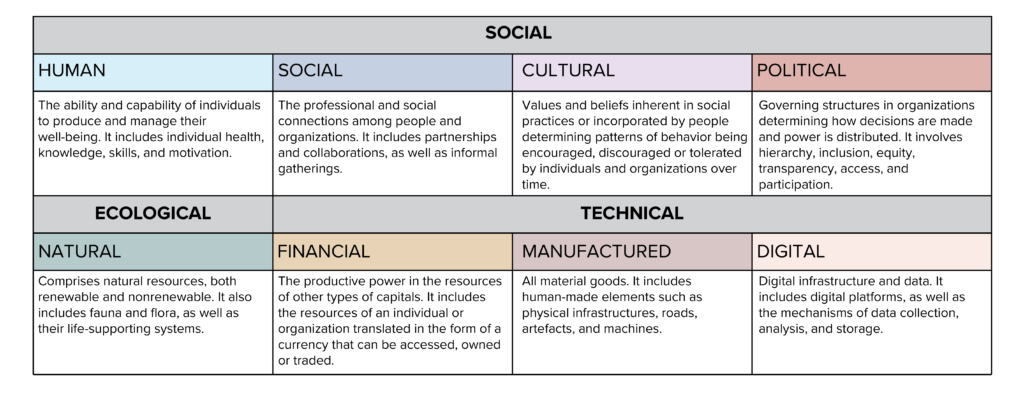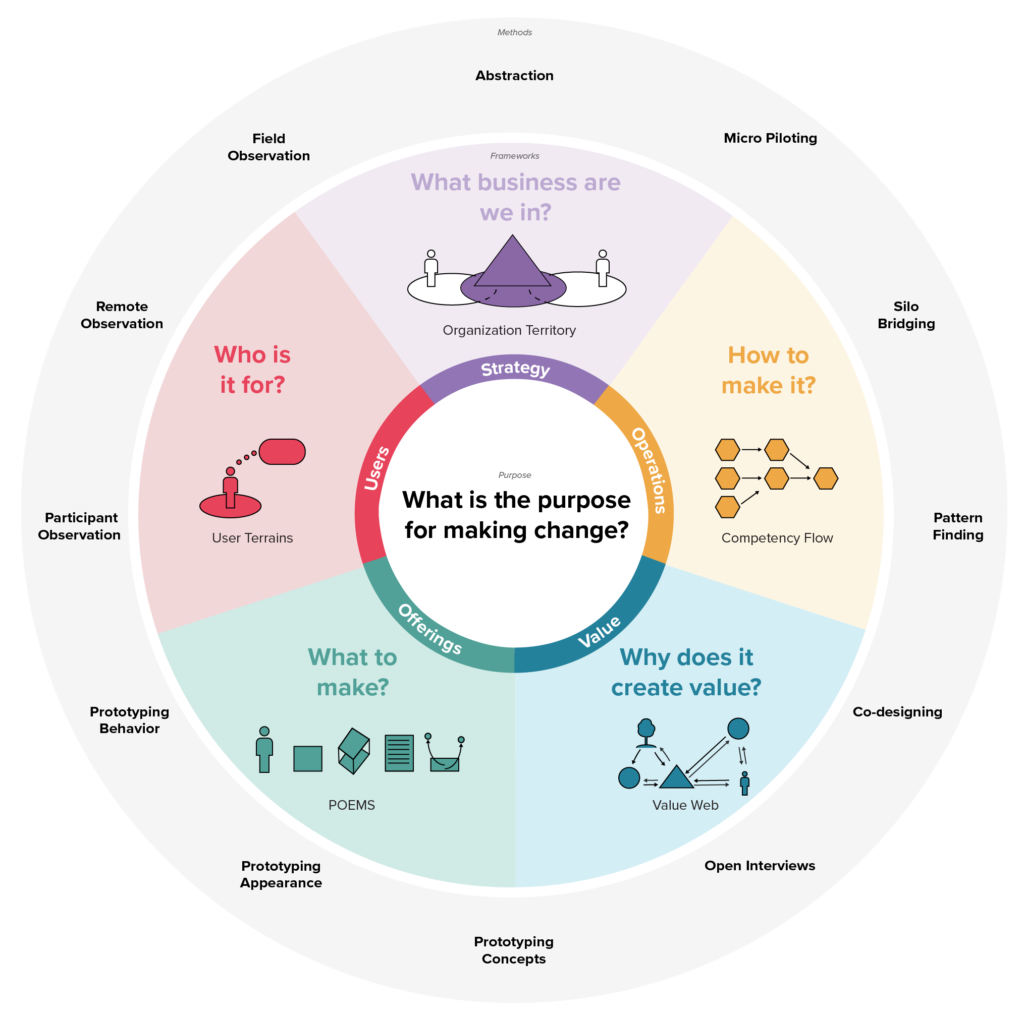The Whole View, the Innovation Lenses, and the Four-I are design models developed in response to three knowledge gaps that arise from working within two modern paradigms: how organizations plan and operate, and how they access and use resources.
Planning and Operations
Whole View
Since 1950s, an organization’s ability to make and sell things grew much faster than its knowledge about what people need, leaving greater uncertainty about what to make. The Whole View is a response to this Innovation Gap.
When organizations don’t know what to make, they can benefit from a structure to explore the various possible options. This conceptual model structures advanced frameworks and methods that can help teams integrate viewpoints of users, offerings, values, operations, and strategies around the purpose for making change.
It can be used to describe an organization or a project or prescribe changes.
Resources Access and Use
Innovation Lenses
There is a discrepancy that results from the myopic approaches organizations have been taking to sustainability. They have been predominantly focused on closing material loops without considering the flows of other resources underlying our linear and fragmented production-consumption systems. The Innovation Lenses is a response to the Discrepancy Gap.
This framework structures diverse resources into eight classes that are further organized in three categories: Social (human, social, cultural, political), Ecological (natural), Technical (financial, manufactured, digital). This resource-based view of design expands the perceptions of team members about the problems and opportunities ahead.

The Innovation Lenses can be used to map an organization or ecosystem resources and assets, identify the resources flowing thought the interactions between agents in an ecosystem, and formulate criteria for future intervention considering how these resources should be redirected to support the well-being of people, organizations, and the ecosystems they live.
Resources Access and Use
Four-I
Modern organizations have been increasing their wealth and impact through the overproduction of material goods at the expense of social inequity and environmental degradation. While beneficial to the organization in the short-term, this way accessing and using resources is creating severe negative, and often irreversible, impact on people and the planet.
The Four-I is a response to this Impact Gap. With growing awareness of the finite resources on the planet and the inequitable wealth distribution of contemporary operations and business practices, many organizations have begun to explore more sustainable and equitable flows of resources in their production-consumption systems. The Four-I presents a resource-based approach with new frameworks and methods that help teams consider four ways that resources flow within the systems they are working in.

